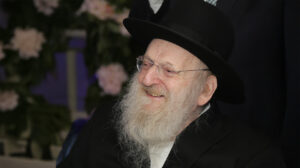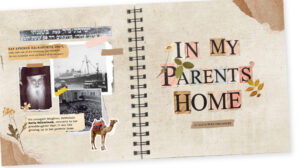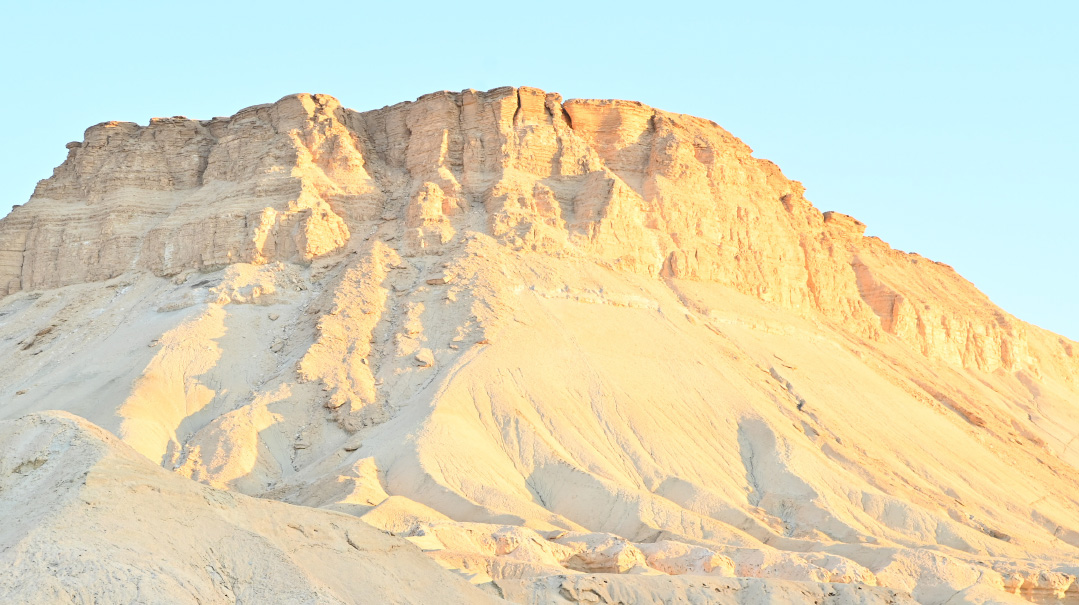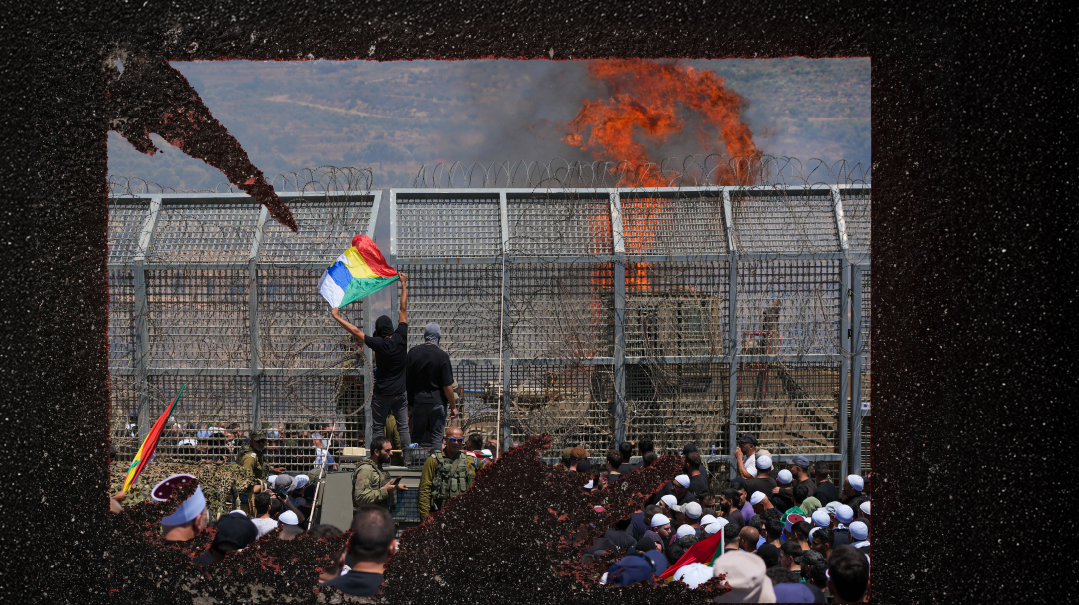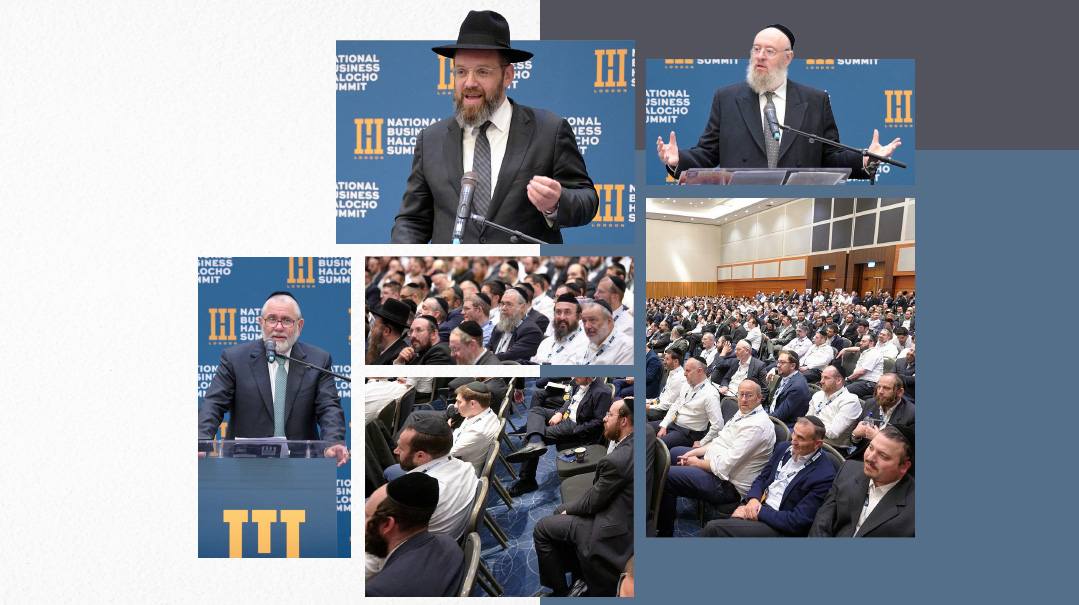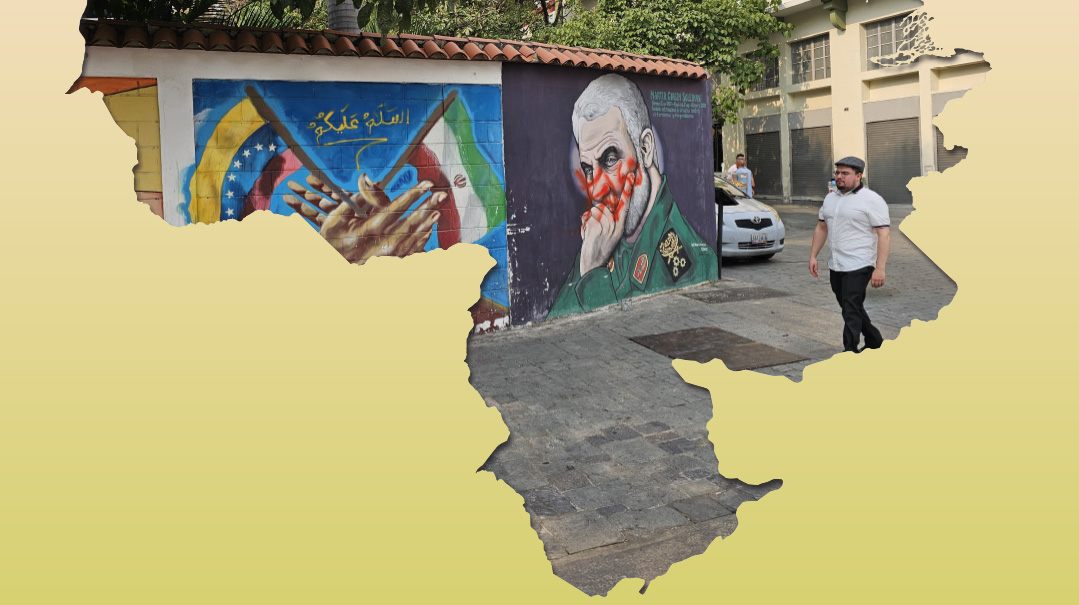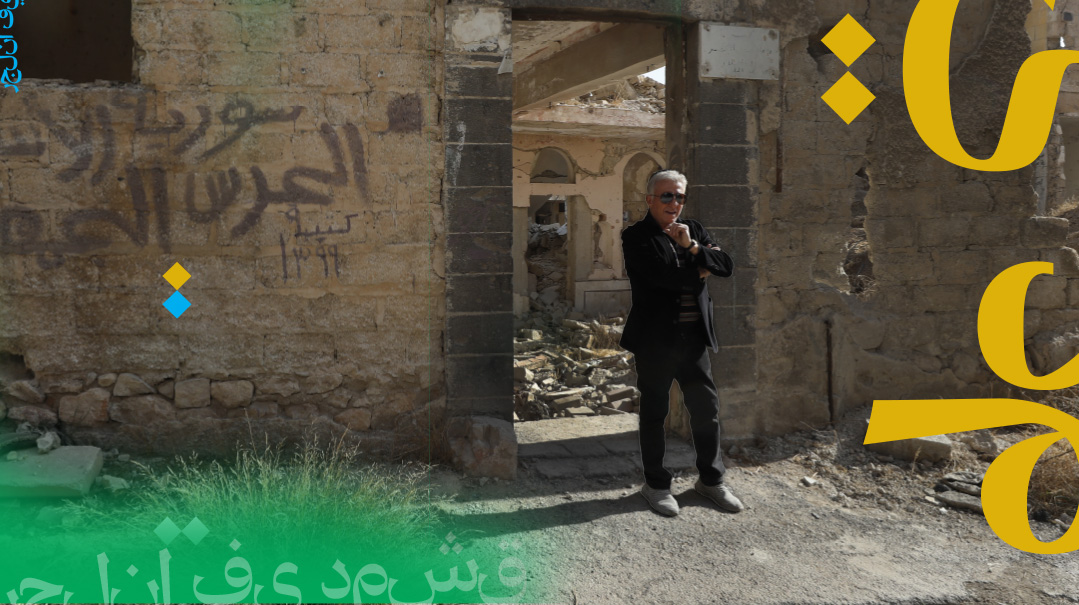Velvet and Steel

Twenty years after the passing of Rebbe Shlomo Halberstam, the Bobover Ruv, the chassidus has moved on, but that special glow is irreplaceable
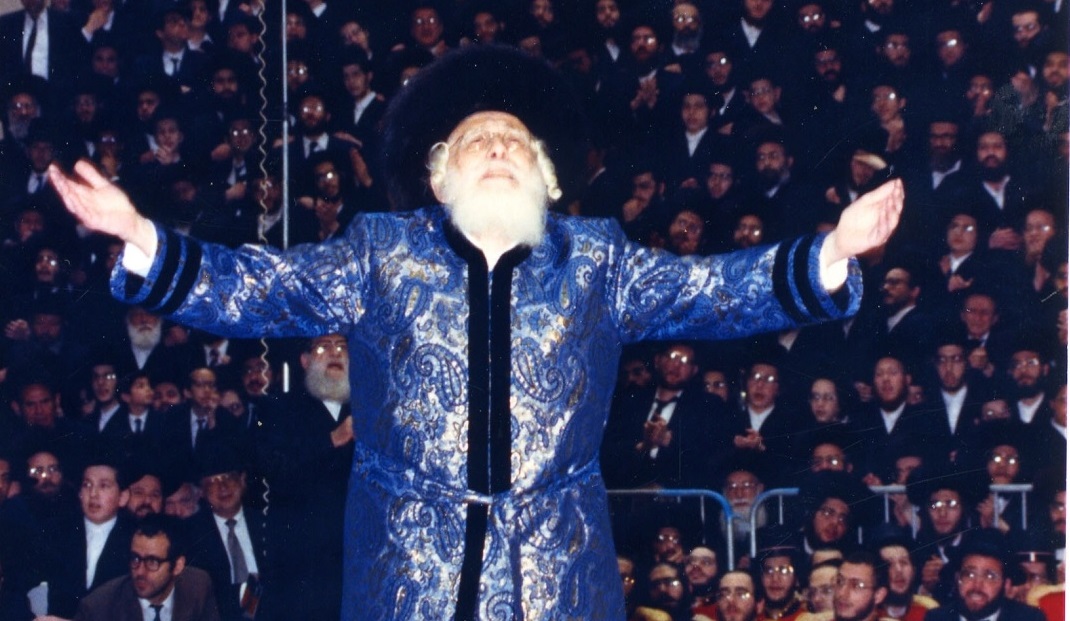
Photos: Mishpacha archives, M.D. Yarmish
It wasn’t a large tish.
Barely a minyan, and those who lined the table were barely people.
When so much effort is expended on trying to forget the past, how can one have eyes to see the future?
But the Rebbe, he saw both.
He was not yet 40 years old, but Rav Shlomo Halberstam had already seen so much. His father, Rav Benzion — the Kedushas Tzion of Bobov — had moved the court from Bobov to Tchebin in 1931, appointing Rav Shlomo as the “Rav Hatza’ir” in his place and charging him with responsibility for the Bobov yeshivah network.
The young rav had earned the love of the talmidim and respect of the chassidim, showing a unique ability to reach the youth, even those who appeared to have been swayed from the ways of chassidus.
If the early 1930s called for love, the end of the decade called for courage and fortitude. During the Second World War, he hid and hid again, assumed disguises and identities, all the while forging papers, working with priests and nurses to rescue children, and offering comfort and hope to those he met.
His father was killed. His wife was killed. Two of his children were killed. Hashem yikom damam.
And now he was in America, having been formally appointed as Bobover Rebbe. He’d married again, to Rebbetzin Fraida, and he was leading his first tish.
He’d lost his beard during the war, more than once, and it was only starting to come back.
But the eyes sparkled with warmth and vitality, eyes that understood, that promised safety and devotion.
It was parshas Emor of 1946, on that Leil Shabbos, that the Bobover Ruv quoted a pasuk in the parshah of the week.
“Hocheiach tochiach es amisecha — You shall surely rebuke your friend,” which Chazal see as a mandate to repeat the words of reproach one hundred times, if necessary.
“Even if our words must be repeated one hundred times, we will never tire or give up,” the Rebbe said. “We will repeat it twice and three times, ten times and fifty times, again and again. We will remind them of who they are and where they come from.”
The rebirth had begun.
MY grandfather, Rav Chaskel Besser, was not a Bobover chassid, but he would often speak with admiration and awe about what this rebbe, Rav Shlomo Halberstam of Bobov, had accomplished.
In Chodesh Av of 2000, a few weeks after the Bobover Ruv had passed away at the age of 93, my grandfather told me new stories. Always a marvelous raconteur, on that night — at a table in the dining room of the old Central Hotel in Jerusalem facing Rechov Pines, where a waiter hovered and puttered and circled, like an airplane waiting for clearance to take off, until we waited him out and he left and the dining room was almost completely silent — my grandfather was talking not just about the Ruv, but about himself.
It was a parable, really, and the Ruv was the mashal. The world was the nimshal.
My grandfather had met the Ruv before the War, he told me, during the summer of 1937 in Krenitz (also known as Krynica), the largest spa town in Poland and a frequent summer destination for rebbes and their followers.
“I remember being surprised that the Kedushas Tzion drew such large crowds, since most of the people there weren’t connected to Bobov at all. That’s where I first met the son, Rav Shlomo… and the next time I saw him was on the Upper West Side, after the war. It was vastly different.”
There is a printed letter that Rav Shlomo, scion of Bobov, wrote just two weeks after his arrival in America, a strange country, where he didn’t speak the language, where he had no chassidim. He was still living in a hotel and had not yet remarried, but in the letter — publicized after his passing — he wrote of his hope of “building a yeshivah to restore the glory of my fathers” and transmit their path.
The way he built that yeshivah, my zeide remembered, wasn’t just by teaching Gemara at a table. “Families lived with him, they arrived in America and moved into his apartment. Babies were born to these families, and those babies became part of this new Bobov, the Ruv himself cradling and singing to them. They all were part of this yeshivah and kehillah.”
My grandfather remembered the first Bobover shtibel on 85th Street in Manhattan, between Amsterdam and Columbus Avenues.
The crowd was sparse.
After davening, my zeide recalled, the Ruv sat down to talk. My grandfather was still living in Eretz Yisrael at the time (in 1951 he would settle in America, on the Upper West Side) and the Ruv wanted to know about each and every Bobover chassid who’d survived and settled there. Shidduchim? Parnassah? Stability?
My grandfather looked out the window at Rechov Pines and recalled the mood of those postwar years. “The people were looking for someone to blame. They couldn’t process what had happened, the staggering losses, so they came up with theories.”
At that time, they were consumed with blaming a particular member of the Judenrat, the Jewish Council, who’d been judged severely by the survivors for failing to help when he could have done more. The accusations took on exaggerated proportions, and it was as if this person became the enemy.
“It wasn’t true,” my grandfather said, “but it wasn’t completely baseless either. I didn’t have an opinion, but the Bobover Ruv was the first person I ever heard who was melamed zechus, who was able to paint the actions of this person in a sympathetic light. He explained the challenges these men faced, the difficult decisions they made at every moment, the lack of real information and clarity. They were doing the best they could. The Bobover Ruv could do this because he had a natural appreciation for a neshamah, and that gave him a certain vantage point, a way of looking at Yidden that was unique.”
IN time, the chassidus would move, first to Crown Heights and ultimately to Boro Park, but the familial connections would remain. The Rebbe knew them all, remembered their beginnings and celebrated their roots. He once corrected a child’s name in a written kvittel. “It’s not that I know better than you,” he told the embarrassed father, “I just remember the zeides and bubbes for whom these children are named.”
He embodied the past, this Rebbe, but he anticipated the future. He once called my grandfather and asked him to “free up a day.”
They went on a trip, just the two of them, my grandfather driving as the Rebbe spoke of his plans. They went to Dover, New Jersey, where the Rebbe was considering planting his kehillah. That plan didn’t come to fruition, but as they drove, the Rebbe discussed parnassah for the next generation, the young men graduating Bobover mosdos. The Rebbe had identified industries with potential for growth, jobs that didn’t require college degrees. Hundreds of young men went into the diamond industry, while many others became computer programmers.
“The Rebbe understood early on that they would be better chassidim, able to devote themselves to avodas Hashem with greater concentration, if they had good jobs, a way to make ends meet, pleasant homes.”
But it was really much more than pleasant homes.
Years after the Rebbe’s passing, a respected and successful mechanech shared a personal story with me, one that sheds light on the Bobover Ruv’s educational philosophy. Back when he’d been a teenager learning in a prestigious litvish yeshivah, his father — who was close to Bobov — invited him to spend a Shabbos together in Boro Park, in Bobov. The bochur got permission from his rosh yeshivah and joined his father in Boro Park, headquarters of the Bobover chassidus — and he was astounded by what he saw.
The standard of living seemed to be beyond anything he’d seen elsewhere, the homes of the chassidim opulent and well-appointed, their cars shiny and long, the clothing expensive and fashionable. It was confusing to the bochur, the product of a yeshivah that preached austerity, that warned of engagement with the pleasures of this world.
He found the Shabbos inspiring, the Torah and tefillos elevating, but the lifestyle bothered him. On Sunday morning, his father took him to gezegen zich, to part from the Rebbe. They received their brachos and the Rebbe looked at him.
“Did you enjoy Shabbos with us?” he asked the bochur.
Yes, the bochur conceded, it had been very special — but then he told the truth. There was something he couldn’t reconcile. Isn’t chassidus meant to be about piety and holiness, simplicity and self-denial? “I saw how people live here and I don’t understand it,” he said.
The Bobover Ruv looked at the teenage bochur for a minute, not speaking. Then he closed his eyes and thought. Finally, he spoke. He said four words.
“Ich farshtey es yoh — I do understand it.”
Perhaps as he’d sat there, with his eyes closed, the Rebbe had gone back and seen the emaciated faces lining the streets in the Bochnia ghetto, desperate for a crust of bread. Perhaps he was remembering the questions of those going to hide in underground bunkers — should they risk taking the children, who might cry out and alert the Nazis? Perhaps he was remembering the clubs of the soldiers in Lvov, the beatings that never really stopped.
And against that backdrop, he saw homes, comfortable safe homes where Yidden could celebrate Shabbos together, and he understood.
Ich farshtey es yoh.
For the bochur, it would serve as an approach shaping an illustrious chinuch career. You can’t service people if you don’t know where they’re coming from.
The Ruv heard his people. He heard them when they spoke and also when they didn’t.
In a pensive moment, the Ruv once shared a personal reflection with my grandfather. “I’m not worried about the ultimate din, the judgment in the Next World, with regard to my own avodah. I tried hard to learn and teach, to carry on the ways of my fathers and transmit it to others, but there is something that concerns me. There were so many of us in the ghettos and camps, and just a few of us were spared…. I’m haunted by the fact that I didn’t do enough to carry on the memory of those who lost their lives, the brothers and friends that never made it out.”
In the 1980s, my grandfather shifted some of his work restoring the abandoned cemeteries of Eastern Europe to outreach work, slowly, tentatively connecting with the neshamos that had been lingering there for decades. Souls, even if it was sometimes hard to see their glow. There were girls who’d married the soldiers who’d saved them; children given away by parents who saw no other option; men who, like the daughters of Lot, never imagined that there was a world beyond what they saw — and reaching these people took patience and great wisdom.
One of these women heard my zeide’s call, and she came to New York on a visit. What she saw — the glory and splendor of a rebuilt Yiddishe world, the world of her parents — caused her great pain. She was married to a non-Jew, their children being raised as non-Jews, surrounded by non-Jews.
My zeide took her to the Rebbe, who offered a short brachah.
“May HaKadosh Boruch Hu, the great Creator, hear your prayers,” the Rebbe said. Then he added one more sentence. “Those which you can verbalize, and those which you cannot…”
Focused as he was on his “family,” the Rebbe cherished these interactions with Jews who’d endured a different sort of holocaust.
A young Bobover chassid who became involved in kiruv was working with newly arrived immigrants from the former Soviet Union. Before Yom Tov, the young man brought a group of these immigrants into his rebbe for a brachah.
It was a busy day. The lines were long. But the Rebbe looked fresh and vibrant as ever, conversing with the members of this small group in Russian, a language he’d learned during his forced travels.
The Rebbe beamed at them and then turned to using English, for the benefit of the young chassid who’d brought them in. “Look, we can talk in a language that your teacher doesn’t even understand… just us, we understand each other….” It was gracious and warm, a way to make them feel special — but it was also the Bobover Ruv’s way, using a language of the past to build a future.
Then, with a serious expression, he turned to the young chassid and confided, “Halevai, I wish that more chassidim would come in with such neshamos, like you did.”
The vision my zeide spoke about was necessary during the early postwar years. The West Side shtibel drew many survivors, among them a new arrival who was blessed with a beautiful voice. He was honored to serve as the baal tefillah, and when he stood before the amud, he somehow seemed able to rise above the loss and devastation he’d suffered.
He came for a few weeks, but one Shabbos, the chazzan wasn’t there. The Ruv sent a bochur to go find him and minutes later, the young man returned with a disturbing report. He’d seen the chazzan sitting on a bench in the nearby park. Smoking. On Shabbos.
The Bobover Ruv didn’t hesitate. “It’s not him smoking. It’s the Germans. Siz nisht eim, siz di Deitschen. Go call him and tell him we’re waiting for him for Shochen Ad.”
The bochur went out again and came back with the reluctant chazzan, who took his place before the amud.
He came every Shabbos for several months, then disappeared, having succeeded in finding a bit of stability… a job, a wife, a second chance.
The years passed. Bobov moved and the Ruv’s own family grew along with the chassidus. On a winter night in 1990, the Ruv was presiding over a massive simchah, the chasunah of a granddaughter. The beis medrash on 48th Street was packed, the bleachers a throbbing mass of joy.
It wasn’t just the building, but what it represented: headquarters of an international chassidus, with outposts in Bat Yam, Jerusalem, London, Antwerp, Toronto, and Montreal. There were yeshivos and girls’ schools, camps and social service organizations, a chassidus numbering several thousand families.
And where else could one find joy like at a Bobover simchah? At times like this, the full extent of the Ruv’s experience — the impossible escapes and unlikely deliverance and glorious resurgence — were celebrated.
Not with words, for no words could tell the story, but when the Bobover Ruv danced — arms extended, white-stockinged feet rising and falling, face luminous and grateful and filled with faith — everyone danced along.
The gabbaim allowed an elderly man to approach, an unfamiliar man who said he had an important message for the Ruv.
“I am the chazzan,” he leaned in close and introduced himself, “the chazzan from the shtibel on the West Side. I have over a hundred eineklach and they are all shomrei Torah u’mitzvos. You know why? Because it was the Deitschen smoking, because it wasn’t me.”
IN Bobov, they miss the Rebbe.
The chassidus has moved on, but that special glow, the radiance of the Bobover Ruv — it’s irreplaceable.
I was in Boro Park recently, with some free time between meetings. I was drawn back to the great Bobover beis medrash on 48th Street: minyanim, coffee in the basement, a place to sit a bit. I was upstairs in the nearly empty ezras nashim — there was just one other man there, gray-bearded, alternately humming and nodding and dozing over his Gemara.
He was one of those, born into Bobov America, raised in the Rebbe’s daled amos. The Rebbe’s voice, he told me, plays in his mind constantly. “I hear him humming on Erev Shabbos before Minchah, I hear him when I say the brachah on Hallel or Chanukah lecht.”
The man stood up and peered at me, as if wondering if I was capable of understanding what he was about to say.
In 1946, a few survivors, among them those who still remembered the Shinover Rav, Rav Yechezkel Shraga Halberstam, oldest son of the Divrei Chaim of Sanz (from which Bobov emanates) gathered for a yahrzeit tish. The newly arrived Bobover Ruv was there. It was known that the Shinover Rav would not prepare Torah ahead of time, feeling that only those words inspired from Above at the moment of speech would have an effect, and an elder chassid who remembered those times suggested that it was improper for this little gathering to share prepared divrei Torah.
The new arrival disagreed. “That was the right of great tzaddikim,” the Bobover Ruv said, “those who were so connected to Heaven that they were confident their words reflected Divine will. Now, our only goal is to reach others; we have a mission to speak to whomever we can and bring them close. The heilege Shinover would surely want us to use every tool at our disposal to make an impact.”
The man clapped my shoulder and pointed toward the room, beyond the room, somewhere only he could see.
He started to say something, but no words came out. He shook his head and walked off, his footsteps echoing behind him as he headed downstairs.
But he was humming, where a moment ago it seemed he would cry. “B’chatzotzros v’kol shofar… with trumpets and the sound of shofar, call out before the King, Hashem.” It’s the unique Bobover nusach, a nusach that couldn’t be anything else, triumphant and jubilant in the way of a national anthem, a sliver of song that carries the sweet warmth of Friday night.
Call out, said the Ruv, proud and true, with whatever tools you have… before the King, Hashem.
(Originally featured in Mishpacha, Issue 820)
Oops! We could not locate your form.
